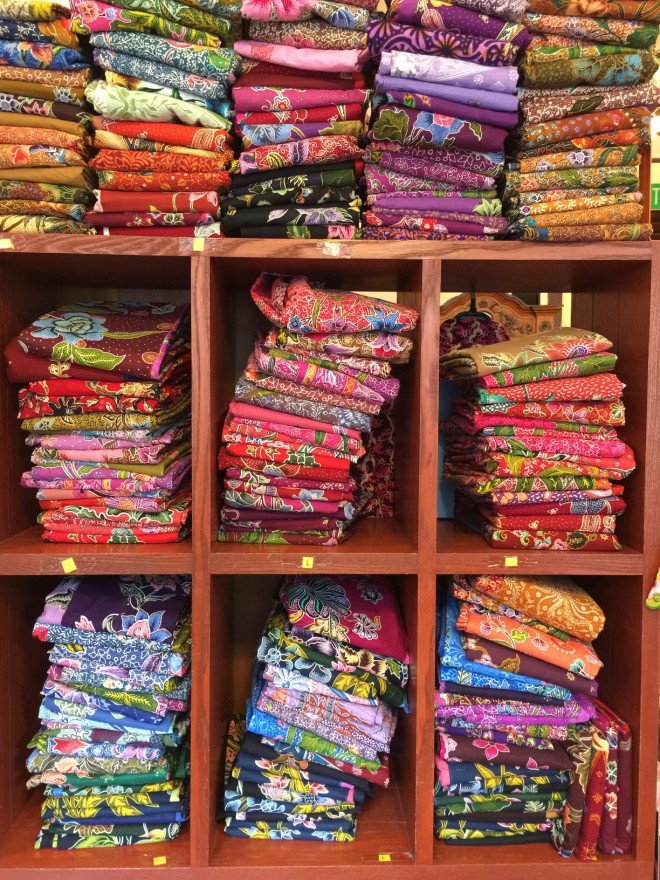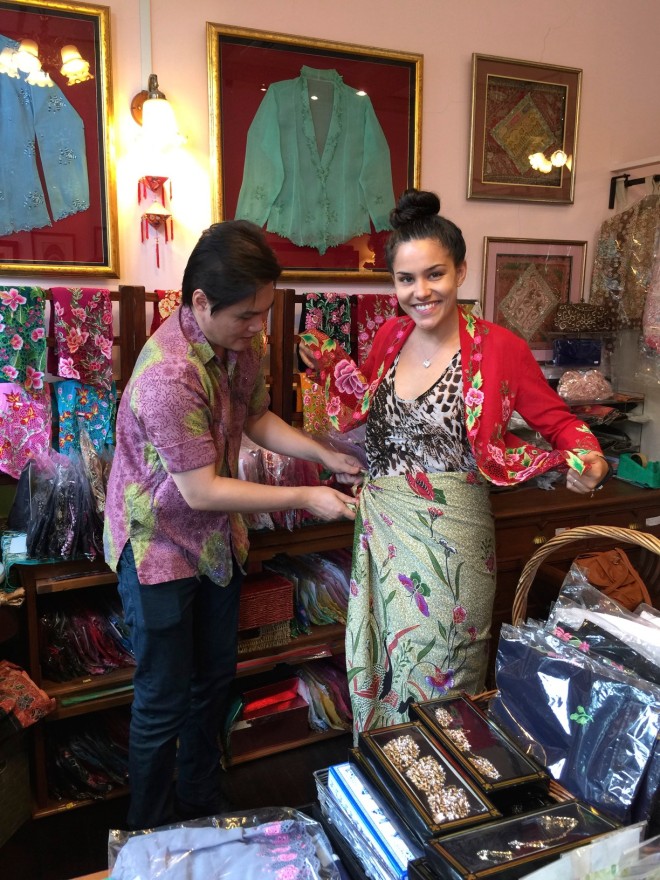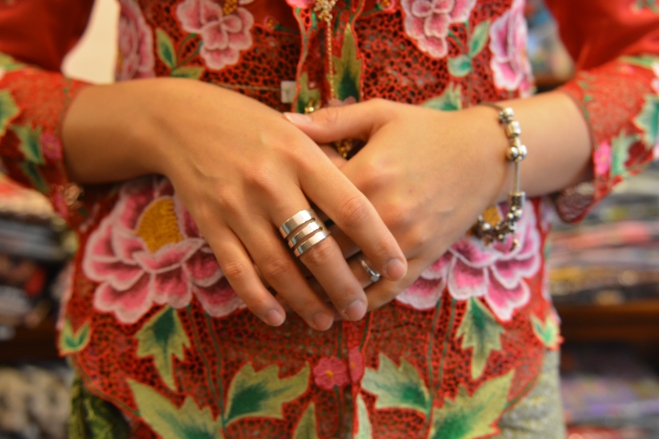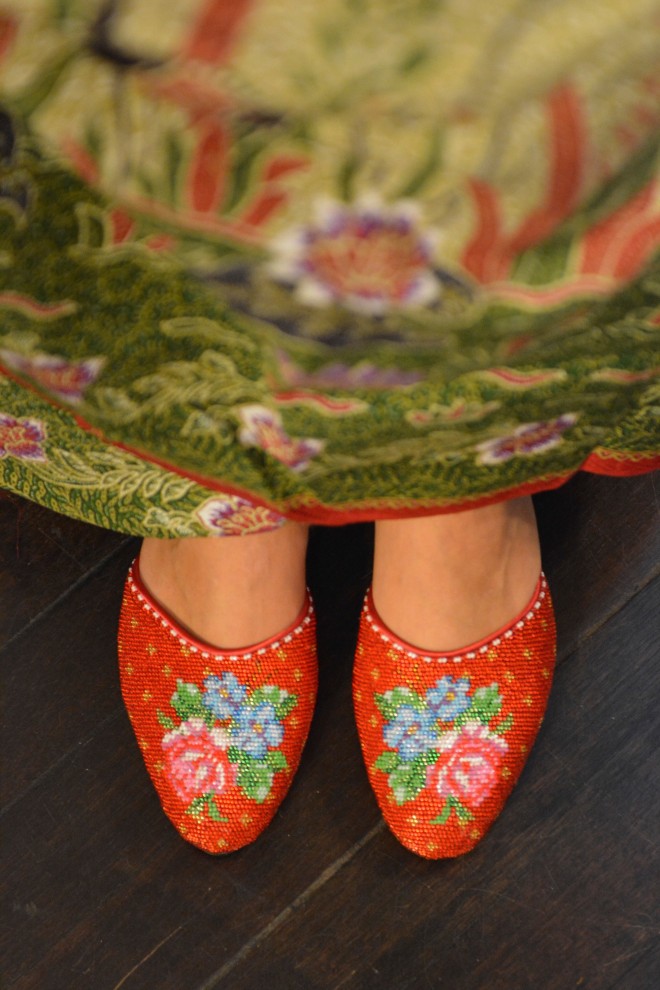The clock strikes eleven and, suddenly, the main streets of Singapore spring to life. The sidewalks are encased by never ending corridors, packed to the brim with exciting merchandise, from pungent street foods to utterly random household goods.
Ben and I are shimmying our way through the hustle and bustle in hope that we’ll soon reach the air-conditioned mall at the end of the tunnel. But first, we need to make a quick stop off at “Kim Choo” (a store we know nothing about) and say hello to “Raymond Woo” (a gentleman we know little about, but can’t wait to meet).
We blink and almost miss the entrance to this quaint, little shop. It’s modestly nestled amongst mountains of curious eats and treats in every colour of the rainbow. We’re finding it hard not to get distracted as we slowly make our way to the back of the store and then up a long, windy staircase…to absolute heaven.
When we reach the top step, our jaws literally hit the floor. What appears before us is like something out of a psychedelic dream. The walls are stacked from floor to ceiling with bejewelled slippers, vivid fabrics and serious bling – it’s like a library of Peranakan fashion (both vintage and cutting edge). Oh my! Where do I go? What do I touch first?
My drunken state is interrupted by the man we’re here to see – Raymond. His beaming smile, quirky style and beautiful, well-informed mind are a welcome distraction. It’s clear Raymond is a Peranakan fashion addict. I’m entranced from the get go.
After our guided tour, I pluck up the courage to explain one of my goals for our “Best Life” expedition – I want to wear the national dress in each country we visit. Before I know it, Raymond and his trusty assistant are sizing me up and rolling me into a sarong. Here’s what I learnt about Peranakan fashion, while I played dress ups for the afternoon.
Generally Speaking:
- The traditional dress code for a Peranakan woman includes: a Nyonya Kebaya (blouse), batik (sarong) and Kasut Manek (glass beaded slippers).
- The Peranakan style originated from Indonesia, which meant earthy colours (e.g. browns) were predominantly worn in the past.
- Modern Peranakan fashion is influenced by the different cultures/populations, which found their way to Singapore over the years (Chinese, Malaysian, Indian and Dutch/European).
- Vivid colours; unique cuts; and imported fabrics (e.g. lace), embellishments (e.g. glass beads) and cuts/styles (e.g. Chinese collar) were soon melded into the local aesthetic.
- Only women of high socio-economic status could afford the use of imported laces and glass beads.
- The modern Peranakan woman is less conservative than her traditional counterpart. Showing a little skin through sheer fabrics, sleeveless blouses or shorter hemlines is commonplace.
- Fabrics are often embellished with butterfly and flower motifs – both European and Asian in nature. Colours used are generally in-keeping with the base fabric to enhance it rather than distract from it.
Nyonya Kebaya (Blouse):
- Deigned with the hot climate in mind, Nyonya Kebayas are typically made from sheer fabrics such as silk, thin cotton or semi-transparent nylon or polyester.
- The slightly tapered waist, structured shoulders and v-neckline serve to enhance the female form.
- Nyonya Kebaya’s are secured by brooches (kerosang) rather than buttons. A woman’s weight typically fluctuates and the brooches allow her to adjust her Nyonya Kebaya accordingly (how thoughtful!).
The Batik (Sarong):
- The modern batik is masterfully folded to aid mobility. The modern woman needs to be able to run after a bus after all! In the past, however, the wrap was tighter to limit the wearer’s stride and make her seem more demure.
- At times, the Batik is wrapped / cut so it creates a longer arrow shape at the front. This helps elongate the body and create an appealing silhouette.
Kasut Manek (Glass-Beaded Slippers):
- The Kasut Manek has a pointed toe to make a woman’s feet appear petite.
- There is a peep-toe version of the slipper; however, only women with toes that sit closely together are encouraged to wear them (apparently, widespread toes are not a good look).
Ultimately, it seems, Peranakan fashion is guided by tradition, elegance and experimentation. It playfully plucks the most beautiful elements of other cultures’ aesthetics and reappropriates them in a stylish way. No doubt, I’ll unwittingly find myself incorporating elements of Peranakan fashion into my own sense of style. Can I have a pair of those glass slipper thingies to go?
To take the Peranakan fashion tour, ask for Raymond Wong and visit:
Kim Choo, Shop 109/111 East Coast Road, Singapore
FOLLOW SOPHEE SOUTHALL
Instagram: @SopheeSmiles
Facebook: Sophee Smiles
Blog: sopheesmiles.com




